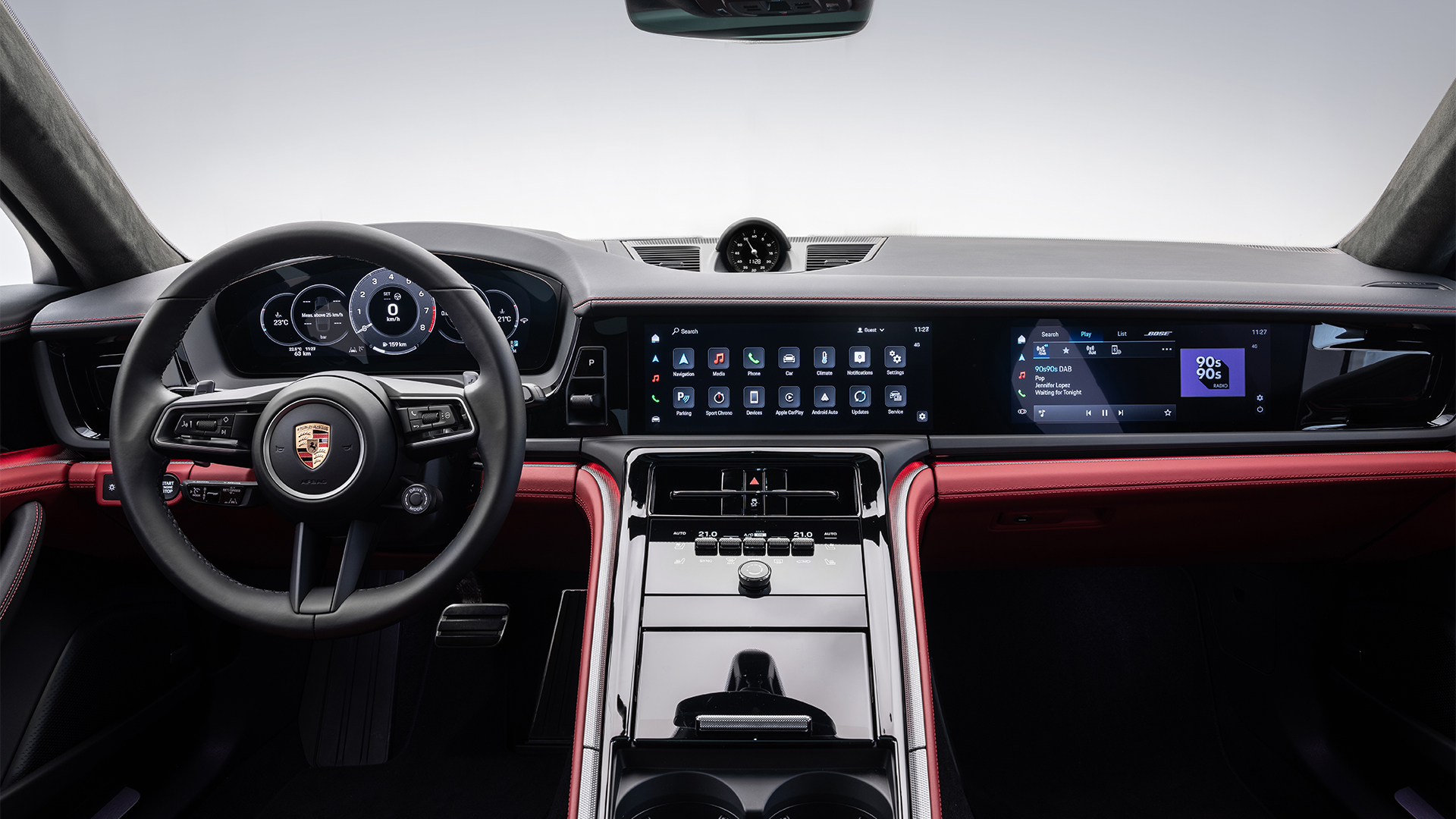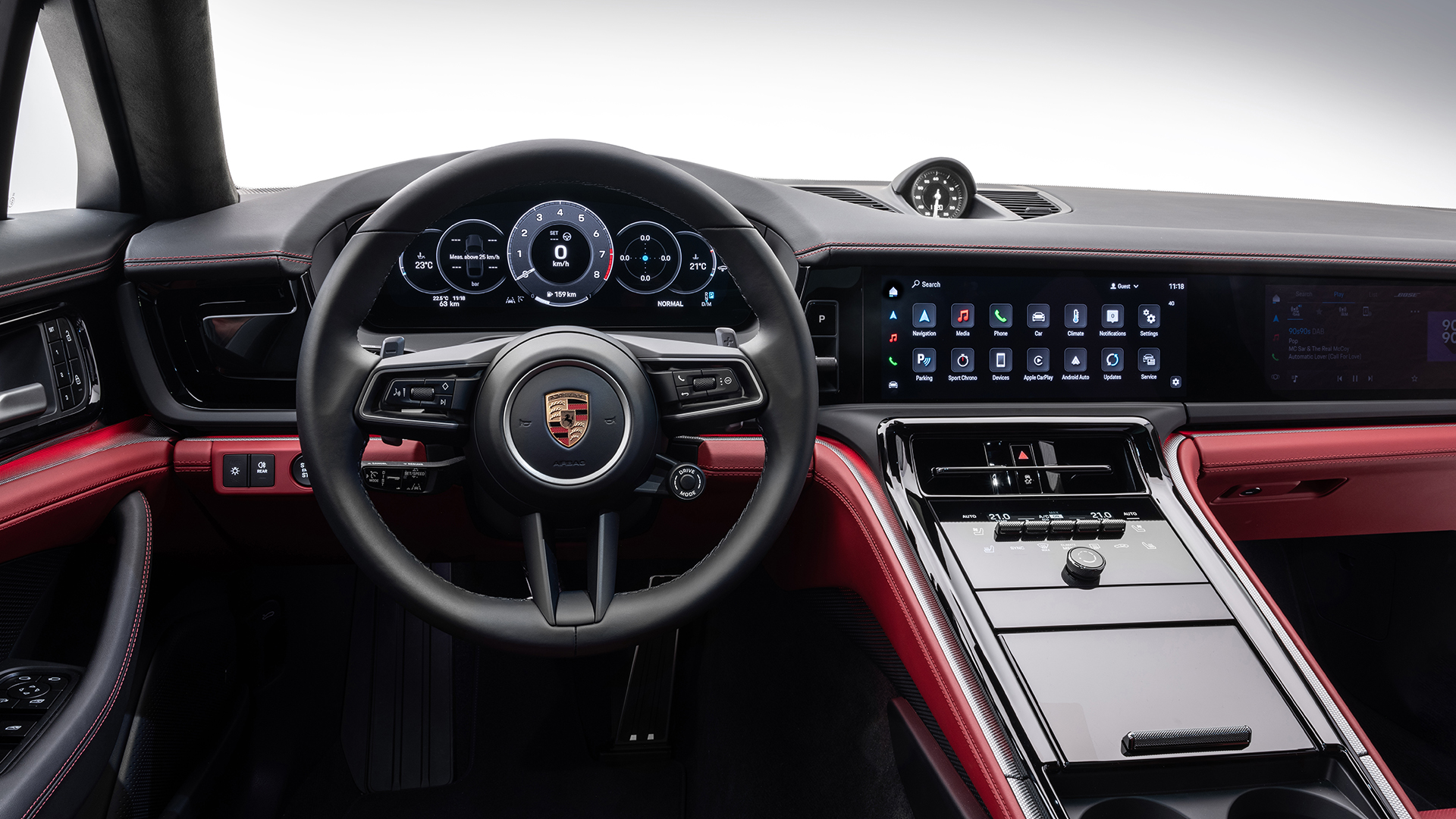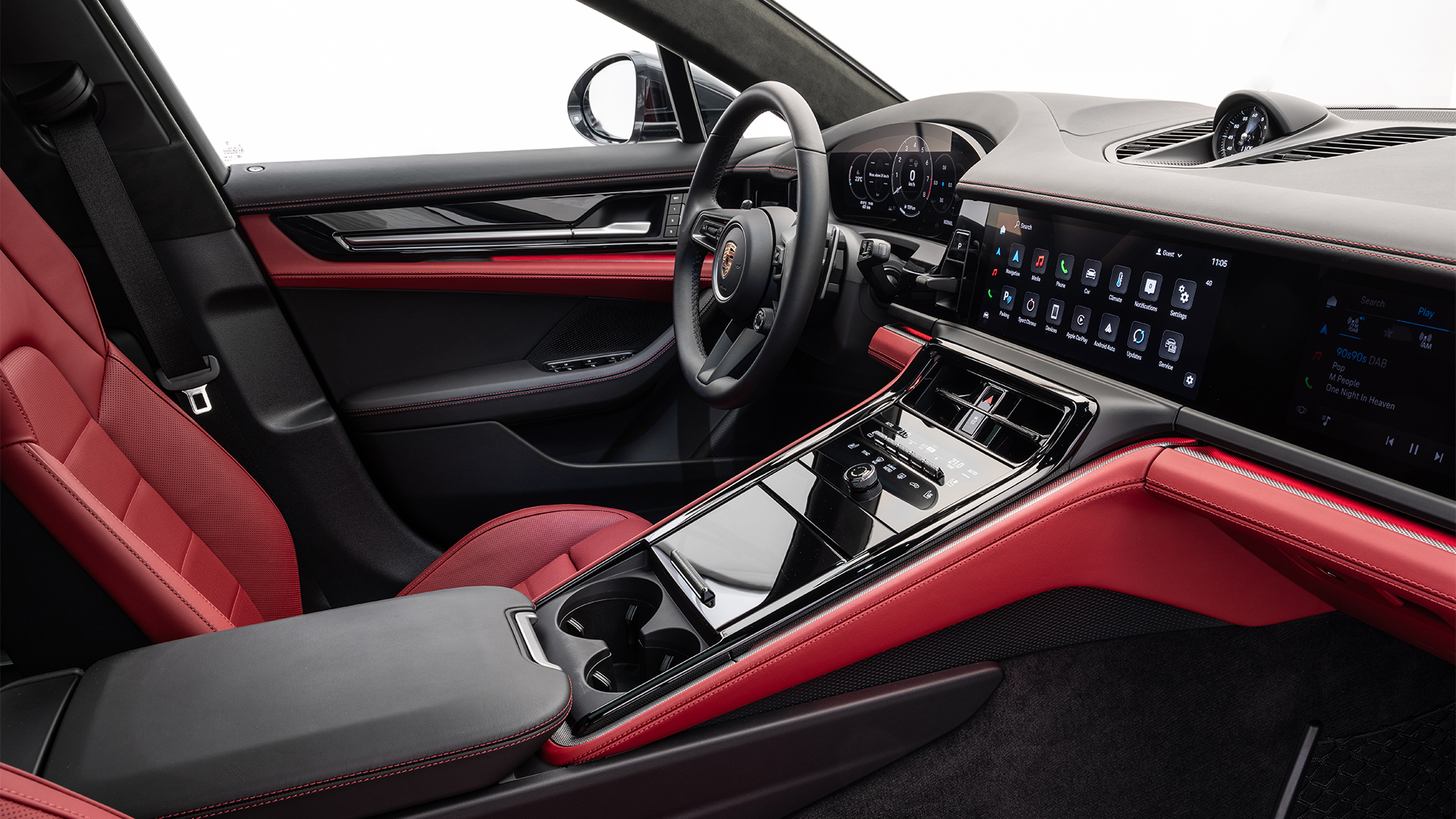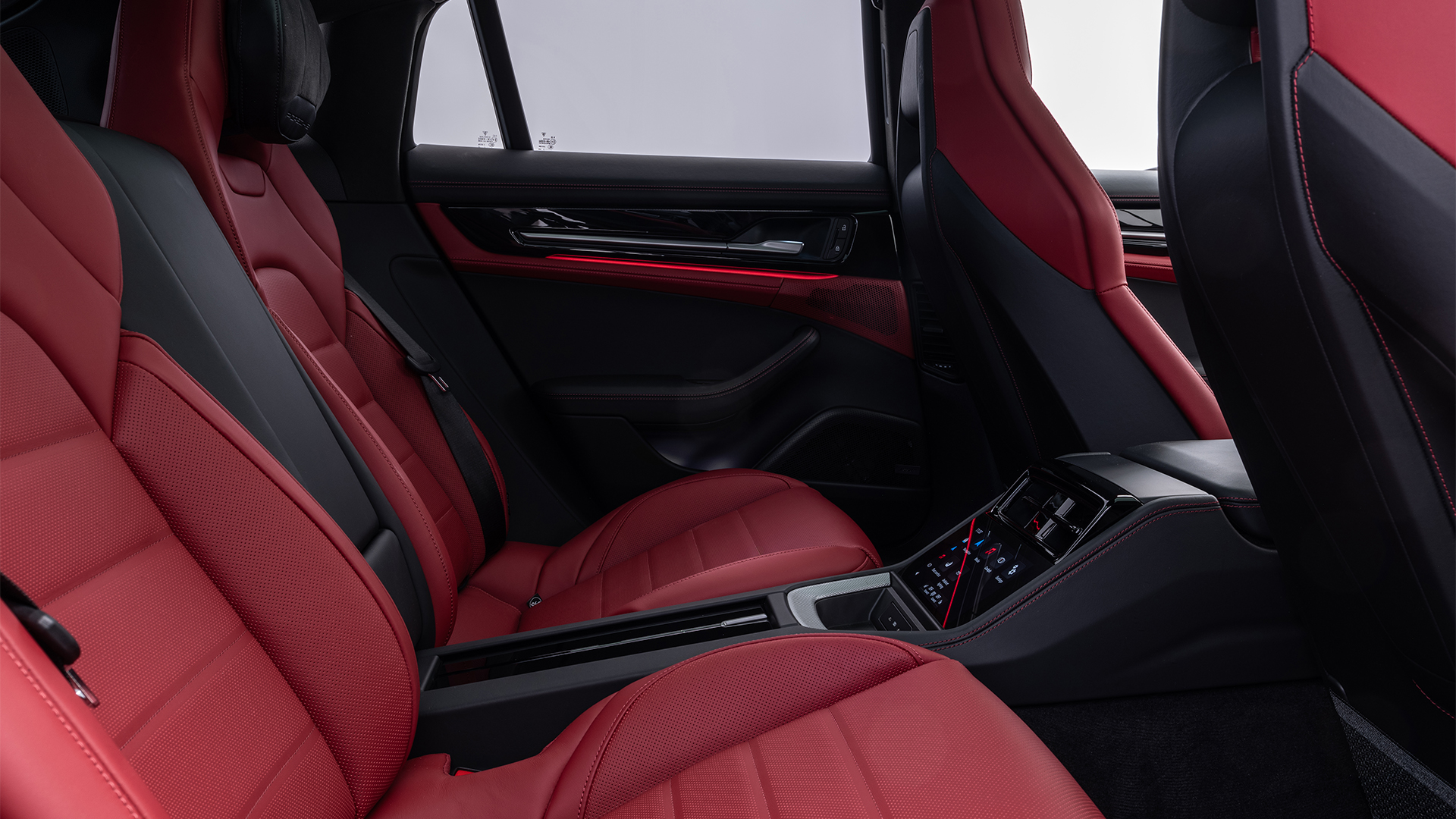
Porsche's long and luxurious Panamera traditionally sat at the top of the German marque's opulent saloon tree, but the introduction of the all-electric Taycan in 2020 not only brought with it state-of-the-art interior tech, it also threw the future of Panamera in doubt.
But Porsche remains committed to its palatial barge, pinching plenty of infotainment features from the Taycan to ensure this massively comfortable and impressively agile ICE (internal combustion engine) machine still has a place alongside its EV sibling.
I got to poke around the interior of the upcoming Panamera, which is due to be fully unveiled later this month, before going for a drive in a test mule around Porsche's plant in Leipzig.
The driving stuff is still very much under wraps, but here are the best parts about new Panamera's insides.
1. The screens are bigger
Much of the infotainment system has been pinched from current Taycan, which means drivers are treated to a razor-sharp and highly customizable, curved 12.6in display that takes care of driving information, such as speed, navigation and vehicle settings.
There's also a 12.3-inch touchscreen infotainment panel in the middle, which also packs the Taycan's underpinnings, so it's faster and more responsive to use. Finally, front passengers can enjoy an optional 10.9-inch touchscreen that offers bespoke entertainment on the go.

This features a privacy screen, so the driver can’t see what the passengers are watching (for safety reasons, of course). But the constantly connected nature of the infotainment package means occupants can enjoy apps like TikTok, Spotify and YouTube from the passenger seat via the VW Group’s upcoming app store.
It's rumored that Porsche is moving away from its parent company's app solution, focussing on its own app store, but whether or not Panamera will use a new OS is up for discussion.
2. The cockpit layout is now more driver-focussed
Again, the new Panamera borrows the driver-centered Porsche Driver Experience control concept that was first introduced in the Taycan. This sees all of the key driver controls placed within easy reaching distance from the steering wheel.
The gear selector, for example, has been moved from the central tunnel to a toggle switch mounted next to the steering wheel, similar to how many modern VW’s do it.

Porsche's bespoke Drive Mode selector switch, which swaps between Normal and Sport or Sport Plus, is also located on the steering wheel, along with scroll wheels and buttons for the digital clocks and infotainment system.
This leaves the central transmission free from clutter and lets it pack a solid amount of storage. What’s more, knurled toggle switches take care of the climate control and they both look and feel great to use.
3. Customers get more out of CarPlay
During my poke around the new Panamera, I was joined by Oliver Grandel, Director Complete Vehicle for Panamera, who confirmed that the company's extended CarPlay functionality, which made its debut on the 2024 Cayenne, will also come to Panamera.
This allows Apple iPhone users to do more within the CarPlay ecosystem, such as change radio stations or delve into the vehicle’s settings. Porsche is one of the first manufacturers to develop CarPlay via the Automaker toolkit provided by Apple, which is great news for the large majority of Porsche owners embedded in the Apple ecosystem.
4. The air vents are completely "fin-less"
The general declutter of the central console appears to have been carried out purely to make a little more theatre of the climate control functionality. The piano black area combines touch surfaces as well as physical buttons for a more premium feel.
What’s more, the air vents are electrically adjustable, so no more sliding plastic fins to get cool air blasting in the right direction. In fact, there aren’t any fins and instead, you can select heating or cooling zones via the climate control menu screens.

5. The top spec is impressive, but probably won't come to the US or UK
During the presentation at Porsche's plant in Leipzig, we got to look at various different trim levels, including the longer and infinitely more opulent Executive version, which is predominantly designed for Asian markets.
A quick hop in the rear revealed acres of legroom, deeply comfortable and adjustable seats, as well as gigantic touchscreen displays mounted to the back of the front seat headrests.
A little poke around revealed that users could pair smartphones and Bluetooth headphones to these devices and stream movies, as well as venture online to browse the web and use apps. On top of this, the Executive model boasted a top-of-the-line Burmester sound system.
It looks set to be a dreamy chauffeur-driven experience, but even the European-bound model we sat in packed a small touchscreen display in the rear where passengers could keep tabs of driving data (weirdly, including G-Force), adjust the stereo and interact with the navigation.
Perfect for handing over infotainment duties to those sitting in the back, but we can imagine it could be a nightmare if you have meddling kids. Oliver Grandel pointed out that you could turn the screen off, but it was immediately activated again as soon as someone touched it.







